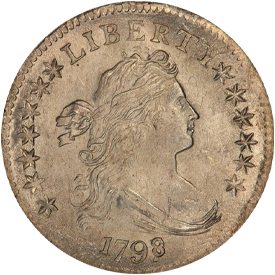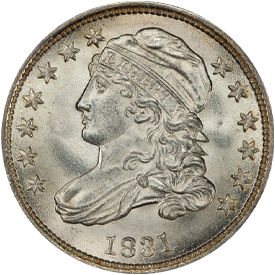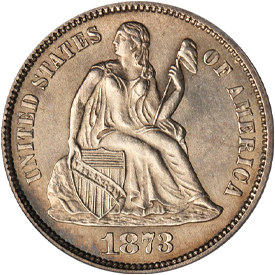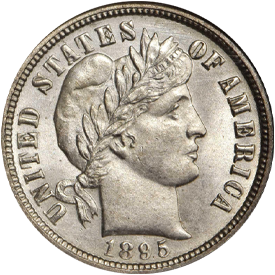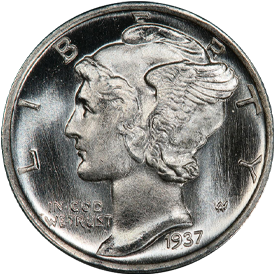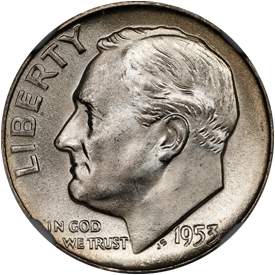Although the dime was one of the denominations authorized in the Mint Act of 1792, production of the ten-cent coin did not begin until 1796. By that point, the Stuart/Scot Draped Bust obverse design had supplanted the earlier Flowing Hair motif, and was paired with the small eagle reverse. Although production was sporadic until 1820 (including a suspension from 1815-1819), dimes have been struck fairly regularly since then with the exception of 1932 and 1933.
Designs of the dime until 1916 were shared with their larger denomination cousins, passing through the Draped Bust, Capped Bust, Liberty Seated and Barber designs. However, in 1916, the dime, quarter and half each received unique designs, and since then, have maintained their own individual identities.
The dime series sports a few ultra-rarities; among them the unique 1873-CC No Arrows, and the fabled 1894-S, of which only 24 were reported to have been struck. Other keys include all dates prior to 1805, 1822, 1843-O, 1871-CC to 1874 CC inclusive, 1895-O and of course, the well-known 1916-D and 1942/1 overdates.
Probably the most avidly collected series is the Winged Liberty or “Mercury” dime, made from 1916 to 1945. These circulated well into the early 1960s, and many of today’s older collectors remember searching for these in change to put into their blue Whitman folders. The current Roosevelt design has been in production now for over 75 years, but their conversion to base metal in 1965 resulted in all dimes dated prior to that time quickly disappearing from circulation.
